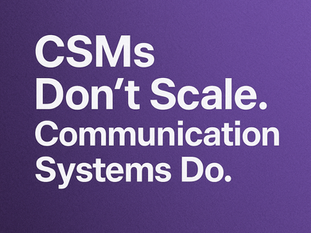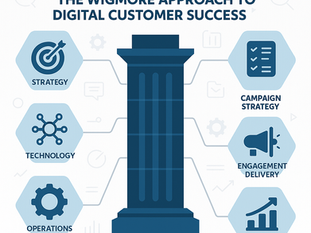
Redefining Minimum Customer Value in B2B SaaS
Mar 3
3 min read
0
35
0
From MVP to MVC:
In the rapidly evolving B2B SaaS industry, product development often centers around the concept of a Minimum Viable Product (MVP)—the smallest version of a product that can be launched to users. However, an MVP alone does not guarantee long-term adoption or customer satisfaction. Instead, businesses must shift their focus toward Minimum Value for Customer (MVC)—the least amount of value a product must deliver to ensure sustained user engagement, renewals, and expansion.
What Is Minimum Value for Customer (MVC)?
Minimum Customer Value (MVC) defines the essential outcome-driven value that a customer must experience for a product to be considered successful. Unlike an MVP, which prioritizes product functionality, MVC focuses on the user’s realized value—the impact the product has on their daily workflows and strategic objectives.
While an MVP is about getting something to market quickly, an MVC ensures the product delivers immediate and continuous value. A strong MVC leads to:
Higher adoption rates—Users see value early and continue using the product.
Stronger retention and renewals—Customers are more likely to stick with a product that meets critical needs.
Expansion opportunities—A well-defined MVC builds a foundation for upsells and cross-sells.
Why MVC Is Critical for B2B SaaS Success
The B2B SaaS industry is renewal-driven—products must provide continuous value to justify ongoing subscriptions. Many businesses struggle with retention because they launch an MVP that is technically functional but lacks customer impact. Without a clear MVC framework, companies risk:
High churn due to poor perceived value.
Low adoption rates because users don’t reach key "aha!" moments.
Wasted development resources on features that don’t drive customer success.
How to Define MVC for Your B2B SaaS Product
To transition from MVP to MVC, follow a structured approach:
1. Identify the Core Business Problem
Your SaaS solution exists to solve a problem. Instead of focusing on minimal features, identify the minimum viable outcome customers need to achieve their goals. Ask:
What is the core pain point our product solves?
What is the simplest version of the product that eliminates this pain point?
What customer success metrics will indicate realized value?
🔹 Example: A customer success platform’s MVC might not just be basic health scores and dashboards (an MVP approach) but ensuring that users identify at-risk accounts and successfully reduce churn by 10% within the first three months.
2. Establish a Minimum Valuable Setup (MVS)
To realize value, customers must set up and use the product effectively. Define an MVS—the smallest set of onboarding steps required to unlock value.
✅ MVC Principle: Ensure the fastest path to value with structured onboarding and automation.
🔹 Example: A CRM software's MVS might include:
Importing customer data.
Setting up automated lead tracking.
Creating at least one sales pipeline report. These steps guarantee that users see immediate benefits.
3. Define Measurable Adoption Benchmarks
MVC success should be tracked with key adoption and retention metrics, such as:
Time-to-First-Value (TTFV): How quickly users experience a measurable benefit.
Adoption Rate: The percentage of users actively engaging with core product features.
Retention & Expansion Rates: Are users renewing and upgrading their accounts?
✅ MVC Principle: If users aren’t consistently using your product’s core features, it’s not viable, no matter how many features it has.
🔹 Example: A SaaS analytics tool might define MVC success as:
80% of new customers setting up dashboards within 30 days.
60% of users generating reports weekly.
4. Optimize for Renewals, Not Just Activation
Unlike an MVP, which focuses on launching quickly, MVC ensures long-term stickiness by aligning the product experience with customer renewal triggers.
✅ MVC Principle: Build for retention by aligning your product’s value moments with customer renewal cycles.
🔹 Example: A project management tool might find that teams who create recurring tasks are 2x more likely to renew. Ensuring users reach this milestone early is part of its MVC strategy.
MVC vs. MVP: Key Differences
Feature | MVP (Minimum Viable Product) | MVC (Minimum Customer Value) |
Focus | Functional features | User outcomes and business impact |
Goal | Launch fast with minimal effort | Ensure sustained adoption and renewals |
Measurement | Usability testing, bug fixes | Retention, engagement, expansion |
Onboarding | Self-exploration, optional setup | Structured, value-driven setup process |
Product Growth | Iterative feature additions | Iterative value enhancements |
Final Thoughts: The Future Is MVC
As B2B SaaS companies shift from growth-at-all-costs to profitability and retention, defining Minimum Customer Value (MVC) is more important than ever. Instead of focusing purely on delivering an MVP, businesses should ensure they deliver measurable, recurring value from day one.
By aligning product development with customer outcomes, prioritizing adoption-driven features, and optimizing for renewals, your SaaS business can move beyond MVP thinking and build a product that thrives in today’s subscription economy.






